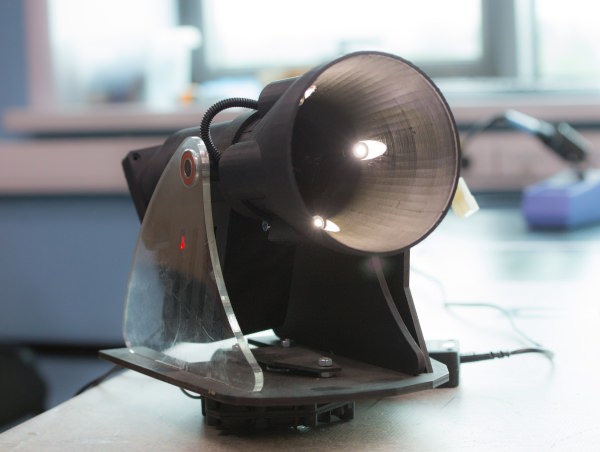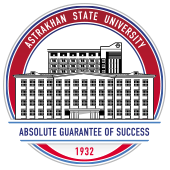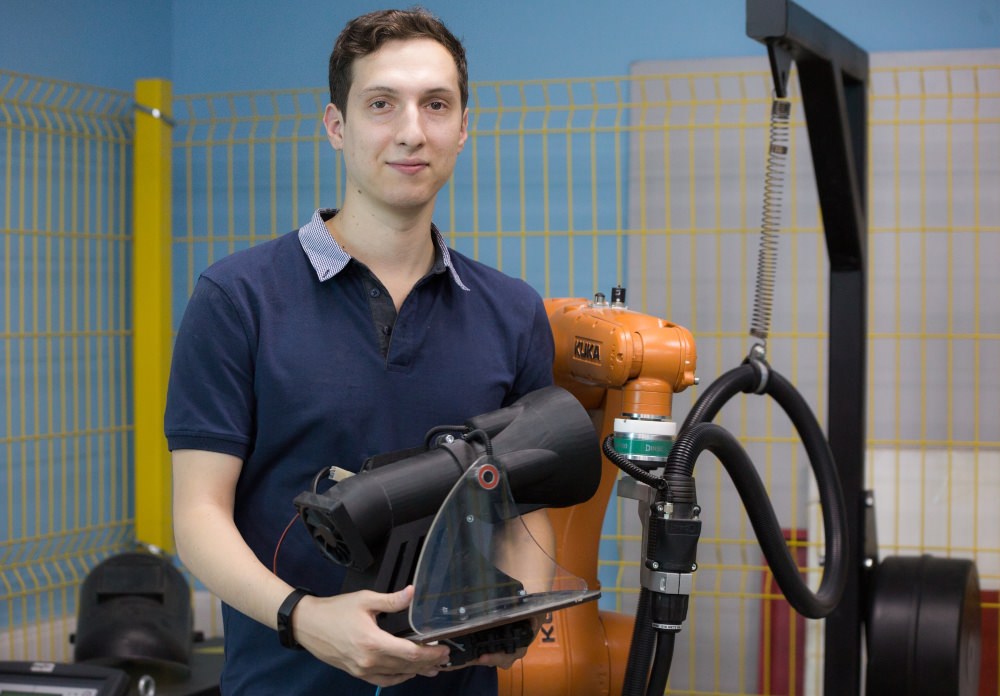Researcher of ASU Invents Fish Forage from Locust
 09.06.2018
09.06.2018
Artem Makukhin from Astrakhan State University has invented how to apply an optical system to attract insects and process them into forage for pond fisheries of Astrakhan Region.
Artem got interested in how to get rid of agricultural pests in 2011, when he was a student of our Chair of General Physics. His mentor, Prof. Anatoliy Likhter, Head of the Chair, researched in this field then, so he involved the talented student in his R&D. The first invention, in which Artem was involved, was to eliminate Colorado beetle from fields of Astrakhan Region. The robot could drive thru the planting area and attract the insects by using a special optical system, which was adjusted to the beetle’s parameters. That project got a prize of the Russian Foundation for Assistance to Small Innovative Enterprises in Science and Technology.
The development was definitely unique; yet, problems related to its commercialization emerged. Farmers of Astrakhan Region agreed that it would be cheaper to hire people than apply an expensive robot.
The inventor did not stop working. After getting a bachelor degree, he jointed our master program “Physics of Condensed State”; his master thesis was related to optical systems. During his studies, Artem went on trying to meet the needs of the agricultural industry. He started developing a trap for locust. It is well-known that locust is a true scourge for the entire Caspian Sea Region. Artem solved the problem by taking a new look at it. “At first, we tried to protect fields from this pest. Yet, to get rid of it completely, numerous robots would be required, which means a large sum of money for a farmer. So we decided to change our policy”, he says.
As it is well-known, locust has a lot of useful properties, including a high concentration of protein and a load of healthy stuff. In 2010, Mr. Alexander Zhilkin, Governor of Astrakhan Region, suggested ideas to apply locust as food and forage. He remarked then that such a project could contribute to substitution of import.
It is still too early to speak about locust as a dish served at elite restaurants. However, its application as forage is regarded as a viable idea. Artem remarked that he studied the forage base of Astrakhan’s pond fisheries; he contacted local farmers and agricultural produce manufacturers regularly; so he is sure that the forage would be highly demanded in both Astrakhan Region and beyond it.
Using a hi-tech trap, one could make up to 10 kg of forage within an hour. Thanks to a fine optical system, which is adjusted considering with locust’s unconditioned reflexes, insects are attracted to get into a container, where they are dried and refined. “We could set up a wholesale production of forage to meet the needs of our region”, the young inventor says. His plans may be backed by prestigious grant providers. At its initial stage, in 2016, the project of a trap for locust won the Umnik grant. The next year, the strict and unbiased commission decided to provide funding for another year. Umnik is one of Russia’s most prestigious grants for young researchers and developers. It also has several projects to back commercialization of R&D aiming at the most viable startups. Artem is planning to get this grant in the future. Now he is working to improve the existing model, whose prototype and 3D variant have already been produced. Using the prototype, one could try the trap under real field conditions and demonstrate its efficiency.
The Regional Ministry of Agriculture, as well as a number of Astrakhan’s companies, are already interested in Artem’s invention.




